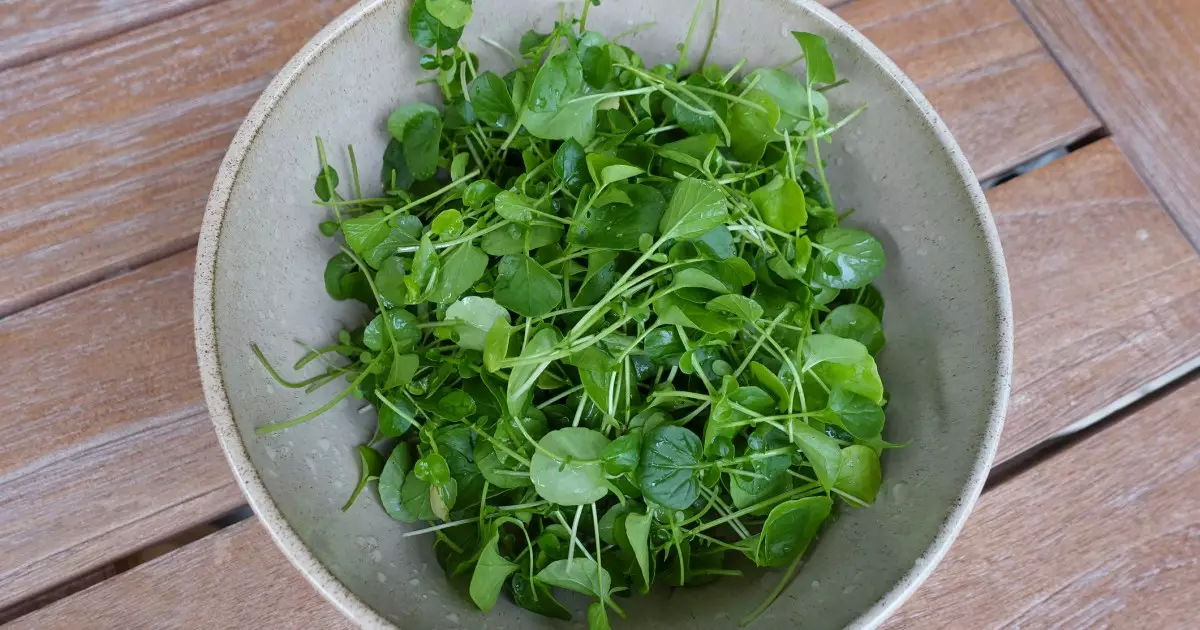Many pet owners often find themselves scouring their kitchens for healthy treats to share with their beloved dogs. However, in the quest for nutritional value, they may inadvertently stumble upon harmful options lurking in their fridges. One such example is watercress, a seemingly innocent leafy green that has found its way into many human diets. While it may boast an impressive nutrient profile for us, watercress presents significant risks for dogs. Understanding these risks is essential to ensuring your furry friend’s health and safety.
The Nutritional Landscape of Watercress
Watercress, scientifically known as Nasturtium officinale, is a water-loving plant that thrives in aquatic environments, primarily in Europe and Asia. For humans, it’s often heralded as a superfood due to its high levels of vitamins A, C, and K, as well as several micronutrients. However, the very properties that make watercress a sought-after addition to salads and smoothies can create digestive chaos for dogs. Unlike humans, dogs possess different digestive tracts that are ill-equipped to handle certain raw greens, particularly those with a significant amount of water content.
Although watercress is not classified as highly toxic, it’s essential to remember that toxicity can manifest in various forms, and even mild toxins can wreak havoc on a dog’s system. The ASPCA has categorized watercress as mildly toxic, primarily due to its propensity to cause gastrointestinal distress. Even a modest serving of this plant can lead to nausea, vomiting, and diarrhea in dogs, underscoring the necessity for pet parents to be diligent regarding their dog’s diets.
Waterborne Dangers and Hidden Threats
One of the more concerning aspects of watercress is its natural habitat — water. Dogs are naturally curious and may ingest watercress found in rivers or ponds. This poses considerable risks as wild watercress can be contaminated with dangerous pathogens, liver fluke parasites, and even toxins from surrounding environments. It’s not just the plant itself that presents a danger; the water-based bacteria and toxins it absorbs can lead to severe health complications for dogs.
For pet owners living near bodies of water, it’s critical to educate themselves about the types of aquatic plants that may be lurking in these environments. Water hemlock, for instance, is another notorious toxic plant that can endanger your dog’s health if ingested. Keeping your dog away from these areas is practical advice that should not be taken lightly. Awareness of your surroundings is essential to preventing exposure to harmful flora and minimizing health risks.
Signs of Distress and the Importance of Veterinary Care
If your dog has managed to consume watercress or has been swimming in contaminated waters, be vigilant for symptoms of distress. Vomiting, diarrhea, and nausea are typical signs that something is amiss. Seeking prompt veterinary care can make a world of difference in your dog’s recovery. Vets will be able to provide appropriate interventions, especially since some dogs with compromised immune systems may face heightened risks of kidney and thyroid damage after exposure to harmful substances.
Many pet owners mistakenly overlook the need for rapid intervention, but doing so can lead to complications that could have been easily avoided with timely medical assistance.
Safe Practices for Dog Owners
It’s crucial for dog parents to cultivate a safe environment both at home and in outdoor settings. Keep watercress out of your dog’s reach, especially if you enjoy using it in your cooking. While sharing food with pets can be an expression of love, some human foods are simply off-limits for a reason. Understanding what constitutes safe food for dogs will promote their health and longevity.
Ultimately, dog ownership entails being proactive about dietary choices and environmental hazards. By prioritizing your canine companion’s safety over the novelty of sharing human food, you’ll eliminate preventable health issues and ensure that your dog leads a vibrant and nourishing life. As we learn more about pet nutrition, adopting an informed approach will yield the best results for our furry friends.

